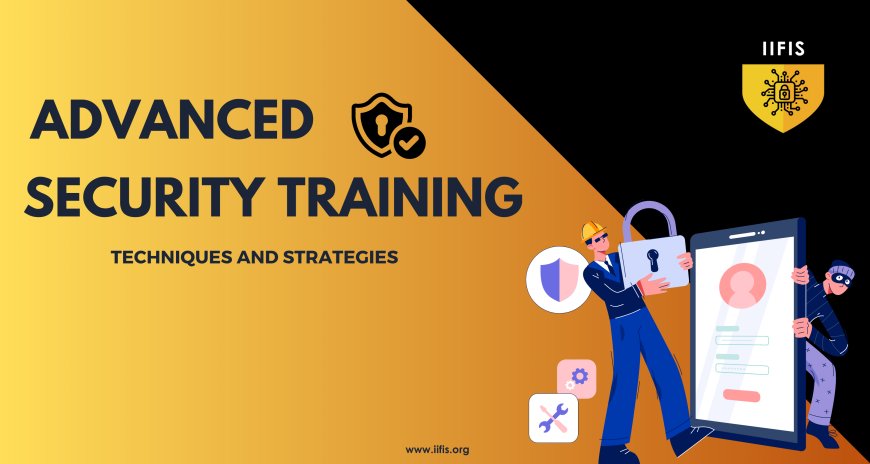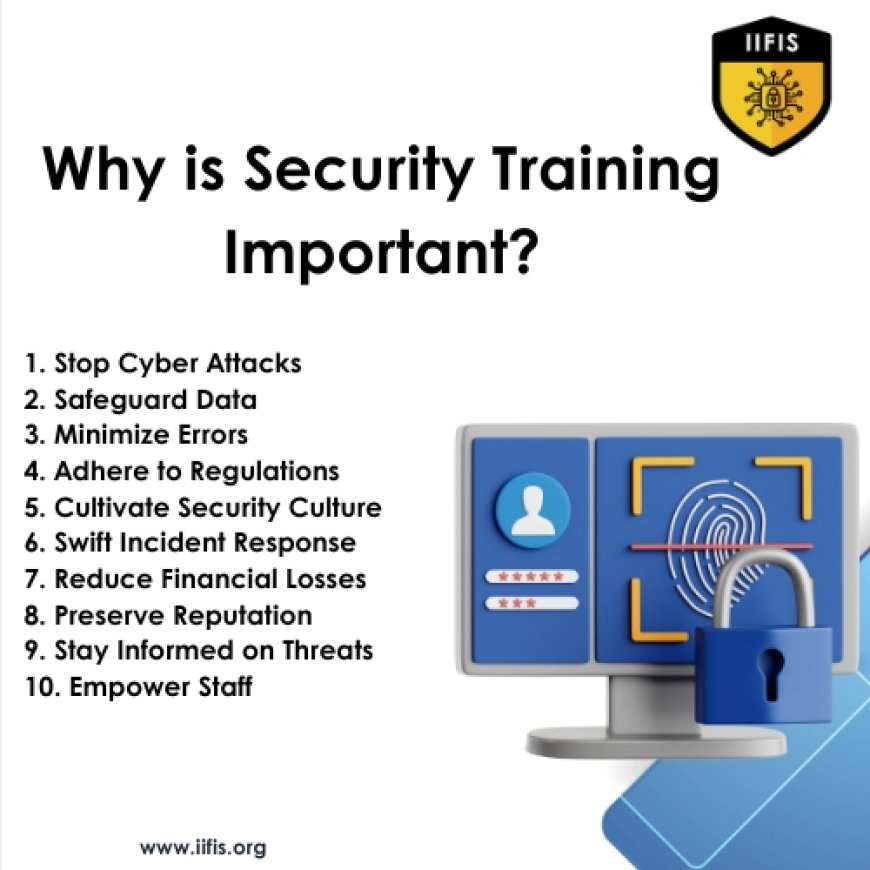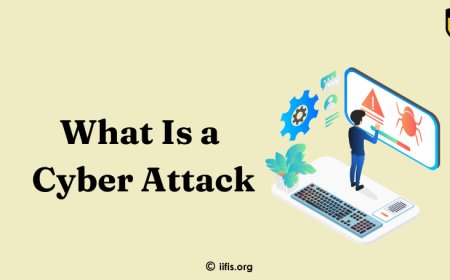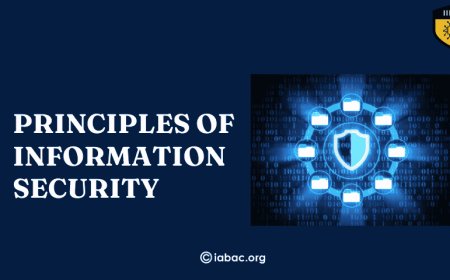Advanced Security Training Techniques and Strategies
Boost your team's security skills with advanced techniques and strategies. Enhance Security Training with proven methods and insights for better expertise.

The importance of strong security training is more crucial than ever. Companies are constantly targeted by sophisticated Cybersecurity threats, making advanced training techniques and strategies essential to protect sensitive information and systems. As cybercriminals become more cunning, comprehensive security training programs are critical. Security training involves various methods to improve the skills and knowledge of IT professionals. Popular qualifications in this field include Cyber Security Certifications, Information Security Certifications, Network Security Certification Programs, and Application Security Certification. These certifications prove an individual's expertise and teach the latest tools and techniques to defend against threats.
Effective security training combines both theoretical knowledge and practical application. This includes simulated cyberattacks, hands-on labs, and real-world scenarios that prepare trainees for actual security challenges. Advanced strategies also emphasize continuous education, ensuring that security professionals stay updated with the latest developments. As companies aim to strengthen their defenses, investing in advanced security training techniques and strategies is vital. By prioritizing thorough and current security training, organizations can better protect their assets and remain resilient against evolving Cybersecurity threats.
The Growing Importance of Security Training
In the realm of staying safe online, security training is becoming more and more crucial. Nowadays, with all the fancy technology around us, it's easier than ever for bad guys to try and steal our information. That's why companies need to make sure their employees know how to protect sensitive stuff.
Security training teaches people the basics of keeping information safe. But as the bad guys get smarter, we need specialized roles like Information Security Professionals and Certified Penetration Testers to stay ahead of them. These folks have special skills to find and fix security holes.
But it's not just about the experts. Everyone, even folks in entry-level roles like Cyber Security Associates, needs to know how to spot and handle threats. These programs cover lots of stuff, like finding problems before they cause damage and knowing what to do if something goes wrong. And for the big bosses, Certified Cyber Security Managers are key. They not only make sure security measures are in place but also come up with strategies to keep everything safe.
The Growing Complications of Outdated Cyber Security Training Methods
When it comes to keeping our digital information safe, traditional ways of teaching people about cybersecurity just don't cut it anymore. The methods we've been using for years aren't enough to prepare folks for the challenges they might face online. Let's talk about why sticking to these old ways can cause problems:
1. Limited Scope: Traditional-style security training mostly talks about theories and doesn't give people enough practice dealing with real online threats. We need training that feels like the real deal, with simulations of actual attacks, so people can learn how to handle them.
2. Ineffective Engagement: Boring lectures and dull online courses don't keep people interested. We need more fun and interactive ways to learn, like games or simulations, to keep everyone engaged.
3. Lack of Personalization: Not everyone learns the same way, but old training treats everyone alike. We need training that fits each person's skills and learning style.
4. Failure to Address Emerging Threats: Cyber criminals are always coming up with new tricks, like scams or hacking methods. Old training doesn't always keep up with these new threats, leaving people vulnerable.
5. Complacency: If people think they already know enough about security, they might get careless. Old training can make folks feel too confident, leading to risky behavior online.
6. High Costs of Failure: If a company's security fails because of bad training, it can be really expensive. That's why it's important to invest in good, up-to-date training methods.
7. Regulatory Compliance Concerns: Some industries have rules about cyber security training, and old methods might not meet those rules. That could mean big fines or legal trouble.
8. Retention Challenges: People forget things if they don't keep practicing. We need ongoing training to make sure everyone stays sharp and ready to handle new threats.
using outdated methods for security training can cause a lot of problems. To keep our information safe online, we need to use modern, engaging, and personalized training that keeps up with the latest threats. It's worth investing in good training to make sure everyone knows how to stay safe online.
How can companies make their security training better?
Making security training better in companies is really important for keeping important information safe. One good way is to use interactive lessons and practice situations in the training. This helps employees get involved and learn how to deal with security problems in real life. Also, it's important to keep the training materials up-to-date so they cover the latest security risks and technologies. Another important thing is to create a culture where everyone understands why security training is important and feels like they can speak up if they see something suspicious. By doing all of this, companies can make sure they're ready to handle cybersecurity threats and protect themselves better.

Security Training Techniques and Strategies
Cybersecurity threats are getting trickier, so organizations need to keep up by using better security training methods. Let's talk about some ways to make security training even better.
1. Practice Attacks: When employees practice dealing with fake cyber-attacks, they get better at handling real ones.
2. Learning About Threats: Workshops on threats help employees stay updated on the latest dangers online.
3. Fake Attacks: Sometimes, security pros do pretend attacks to see how good a company's defenses are.
4. Avoiding Scams: Programs that teach people how to spot and avoid online scams, like phishing, can help.
5. Keep Learning: Since threats keep changing, employees need to keep learning about new ones.
6. Fun Learning: Making security training like a game can make it more fun and easier to remember.
7. Team Training: When people from different parts of a company learn together, they can understand security better.
8. Getting Certified: Encouraging employees to get security certifications shows they're serious about keeping things safe.
using better security training methods is key to staying safe online. By doing practice attacks, learning about threats, and making training fun, companies can make sure their employees know how to protect against cyber-attacks.
Learning advanced security training to keep things safe online is super important. We need to use new tricks and tools to protect our digital stuff and keep up with sneaky bad guys. It's not just about using fancy tech, but also understanding how people might act weird online and being ready to stop them. We've got to keep on learning and changing to stay one step ahead. Everyone in a team needs to be alert and responsible for keeping things safe too. So, getting good at security stuff is key to making sure we're ready for whatever comes our way online.
























